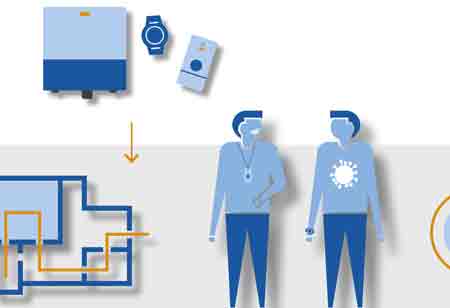FREMONT, CA: Law enforcement is not only concerned with investigating crimes and grasping perpetrators. Policing involves completing and processing a large amount of documentation. Based on the 2019 Annual Report on the Role of Technology in Law Enforcement Paperwork, police officers consume three or more hours per shift on paperwork.
The more time-consuming paperwork by police officers, the shorter time they have on the streets. Law enforcement agencies have initiated implementing intelligent automation (IA) to decrease the time spent processing records, permitting officers to devote more of their shifts to community work and crime precluding.
Intelligent automation (IA) possibilities in police enforcement
Like any other company, law enforcement agencies can build an automation plan by recognizing the potential for IA. Automation opportunities live at points in workflows where bottlenecks happen. Processing paperwork involves straightforward, time-taking, and redundant operations performed by a team of individuals, making it a reasonable application for IA.
For the Collin County Sheriff's Office in Texas, inmate processing compelled the prison system to retard. The Sheriff's Office sought to accelerate convict processing and reintroduce deputies to the field so they could resume defending and serving. Collin County has a population of over a million residents, which implies it is a high-crime area.
At the time of an arrest, the officer manually documented the arrestee's robust personal and charge details into the cruiser's onboard software. When the officer came to the jailhouse, he manually documented the same data into the jail's computer system as part of the end-to-end booking process. For security and regulatory bases, the two systems must be separated.
Entering and re-entering data improves the time needed to process perpetrators. The officer's rest at the jailhouse can vary from 45 minutes to two hours per booking.
Extra possibilities for IA in law enforcement contain the following:
- Processing of Penalties
- Reporting on Intelligence
- Reporting of Crimes
- Processing of Firearms Licenses
- Processing of Evidence
How IA is employed in police enforcement
By leveraging IA, a digital worker at a law enforcement agency can safely and compliantly transfer data from one system to the next. For illustration, the digital worker gathers data from the cruiser system in real-time in Collin County and ends the data transfer to the jailhouse system.
This step occupies the arrest record with required data and reports to the jailhouse clerk that a prisoner is on his or her way. The jailhouse clerk can leverage the digital worker's lead time by swiftly assigning a jail room and qualifying for the arrestee's arrival. The officer must not spend more time entering data to complete the jailhouse record system.

